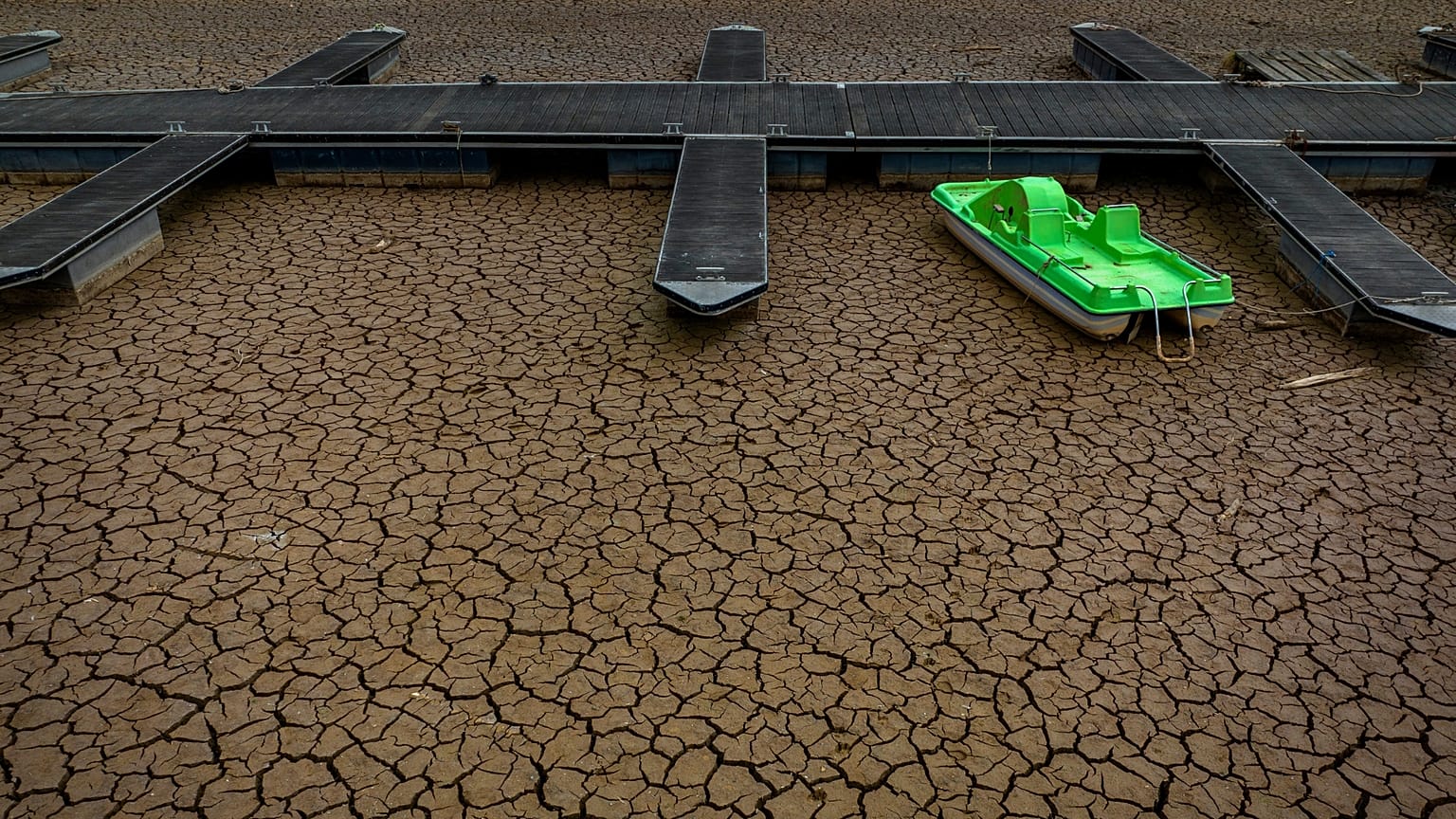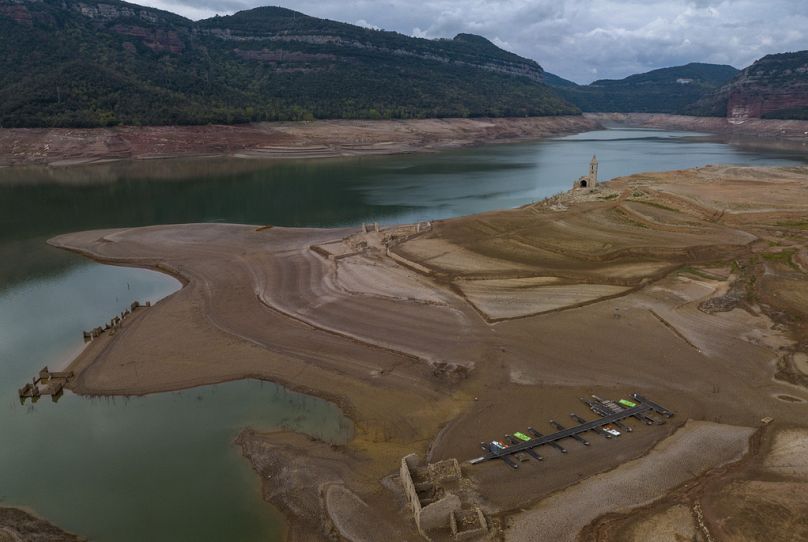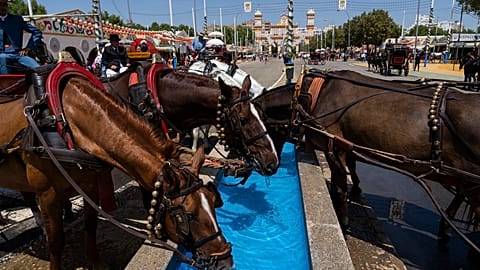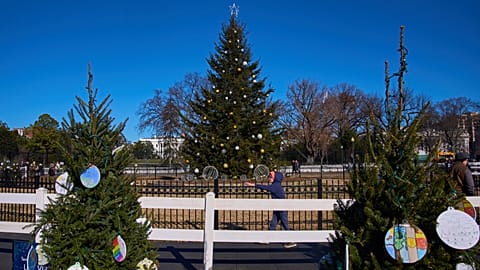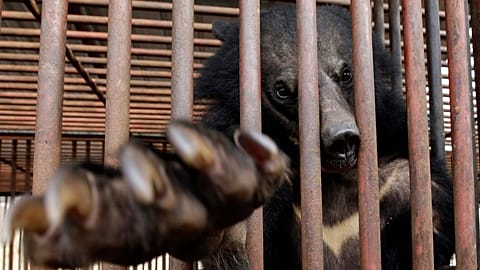It isn’t the first time the region has faced water shortages but experts say they are now getting more frequent and intense due to climate change.
Barcelona is facing water shortages as Spain experiences one of its worst droughts in decades.
Prime Minister Pedro Sánchez told parliament on Wednesday (19 April) that "drought is going to be one of the central political and territorial debates of our country over the coming years."
"This is clearly our responsibility, our duty, because the challenge we face from climate change and water stress is evident."
In the northeast of Spain, Catalonia’s 7.7 million residents are suffering the effects of 32 months of drought. Lack of rainfall is particularly bad in Barcelona where reservoirs are now running dry.
Authorities warned on Tuesday that the region is heading for a “drought emergency” in September unless forecasts for rain improve. It would mean even tighter restrictions on water use.
"At this point, it's the worst problem we're facing," said Catalan leader Pere Aragones, lamenting one of "the worst droughts in 50 years".
Reservoirs are running low in Catalonia
Barcelona, Girona and other towns and villages in the area are supplied with water by the Ter-Llobregat river system. Spain’s government has said that its reservoirs - and others in Catalonia - have shrunk to 27 per cent of their capacity.
The only region in Spain that is worse is the Guadalquivir river basin in southern Andalusia where reservoirs are at just 26 per cent of capacity.
Around 13 cubic hectometres of water were moved from Catalonia’s Sau reservoir to another nearby in recent weeks in order to preserve water quality. Thousands of invasive fish have been culled to protect native species as the levels drop.
It comes after levels fell so low last summer that the ruins of an 11th-century church were revealed from beneath the surface.
Current restrictions mean that Catalonia’s cities are only allowed to use 230 litres of water per person per day. That includes personal use and also public services like fountains or street cleaning. Under “emergency” plans, that quota would drop to 200 litres.
The average person consumes around 116 litres a day for domestic use alone. The region’s government is now looking to introduce fines for cities that use too much water.
Which Spanish towns are switching off water?
The situation is already bad for some of Catalonia’s towns and villages. L’Espluga de Francoli, 100 kilometres west of Barcelona, has been under water rationing for months.
Between 10 pm and 7 am every night, domestic water supplies are switched off for its 3,600 residents. Three times a week, a tanker truck brings water to top up its supplies
"Climate change.. has taken hold very quickly over the past two or three years," Xavier Rosell, who is responsible for environmental issues and municipal services in the area, told AFP.
The region saw similar severe water shortages between 2003 and 2008 but now periods of drought are becoming more frequent and more intense.
“We're facing a difficult moment in terms of both water resources and rainfall," Spain’s Agriculture Minister Luis Planas said after the weekly cabinet meeting on Tuesday.















